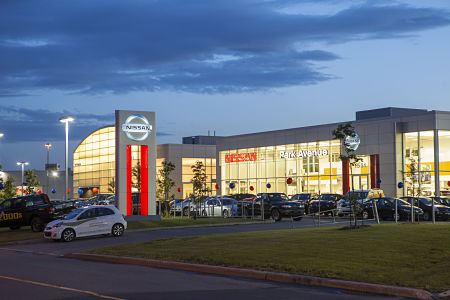Nissan and Renault plan to launch driverless ride-hailing and ride-sharing services over the next decade, according to the companies.

Ogi Redzic, head of Nissan-Renault’s Connected Vehicles and Mobility Services division, said the alliance would begin self-driving services with electric cars within the next 10 years.
"We think that the big opportunity for us is in automation, electric vehicles and ride-sharing and hailing together," Redzic said.
According to the report, the two are testing self-driving vehicles and any new service would run on pre-mapped courses with predetermined pick-up and drop-off points.
Redzic said the Japanese and French partners were testing self-driving vehicles, and that any service would run on pre-mapped courses with predetermined pick-up and drop-off points.
Redzic said to market a self-driving service, regulations need to change to allow driverless cars on roads. At the moment, most global jurisdictions do not expressly authorize vehicles to operate on regular roads without a driver." It doesn't just depend on us," he said. "To become fully driverless you need laws to change."
The two automakers are developing the system with Japanese game software maker DeNA and French public transport operator Transdev.
German rival BMW is also testing autonomous vehicles for use in ride-hailing services, while Uber has been developing self-driving technology.
U.S. tech firm nuTonomy and ride services company Lyft, which counts General Motors as a major shareholder, announced they would begin piloting an autonomous vehicle ride-hailing service in Boston.
In June, Nissan hosted a forum on autonomous vehicles in Washington, D.C. and showcased its vision of the future.
Andy Christensen, senior manager, Nissan Technical Center North America in Michigan, explained how Nissan's perspective is different from other approaches that seem focused only on removing the driver from the driving experience. Nissan's philosophy is not to simply replace the driver in an automated vehicle.
Instead, Nissan wants to enhance the driver's experience by introducing technologies that make cars more intelligent and more exciting partners.
"Someday, when drivers want, the technology will be available to do the driving task for them," said Christensen. "But at Nissan, we see the driver remaining engaged and integral well into the future."
It's really an evolution. Traditionally, how to drive the car "was always left up to the human driver."
That's changing, according to Christensen: "Working in the area of driving automation is a completely new challenge since we are now trying to develop sensors and systems that can understand and adapt as well as human drivers."
As technology begins to tackle the complicated task of driving, today's driver will first experience systems assisting them, such as Nissan ProPILOT Assist, while they remain in full control.
"With continued advances in sensor and processing technology, more of the driving task will eventually be able to transfer from the driver to the system and ultimately allow the driver to do something other than drive the vehicle," said Christensen.
Maarten Sierhuis, director, Nissan Research Center Silicon Valley and Tracy Woodard, director, Government Affairs, Nissan North America, joined Christensen in sharing Nissan's perspective on the future of autonomous vehicles. Woodard said hosting the event was important to "showcasing our approach to autonomous vehicles and leadership in how we are going about thoughtful rollout of these technologies."
And as lawmakers, regulators and states grapple to understand the opportunities, challenges, realities, misconceptions, present and future of autonomous vehicles, Woodard said Nissan wants to help keep the conversation moving forward.
"Bringing our experts to Washington shows our willingness to engage on these topics with the groups and decision-makers who attended," said Woodard.
In February, Nissan demonstrated its latest autonomous drive technology on public roads in London. Participants in the passenger and rear seats were given the opportunity to experience the technology, which consists of millimeter wave radar, laser scanners, cameras, high-speed computer chips and a specialized HMI (Human Machine Interface), just to name a few. All of this helps allow the vehicle to operate in an autonomous manner on both highway and city/urban roads including runabouts once the destination points are entered into the navigation system.
"Innovation and ingenuity is at the heart of the Nissan brand and its people," said Takao Asami, senior vice president, Research and Advanced Engineering at Nissan. "This test of Nissan's forthcoming autonomous drive technology in the demanding conditions of London streets underlines our commitment to delivering Nissan Intelligent Mobility to our customers."
